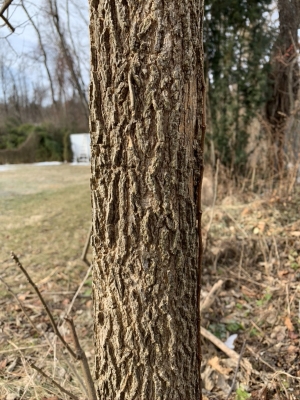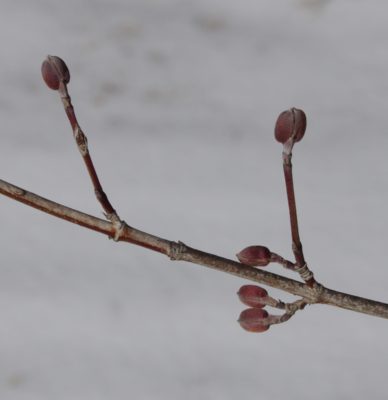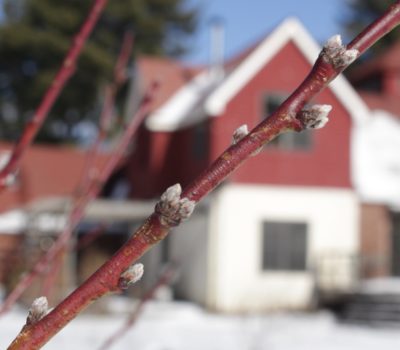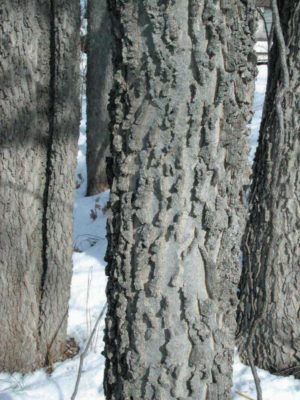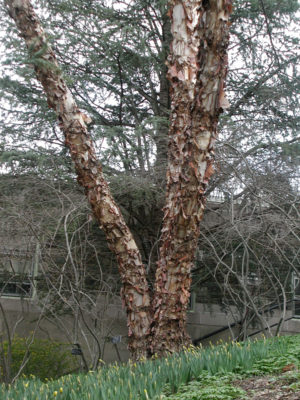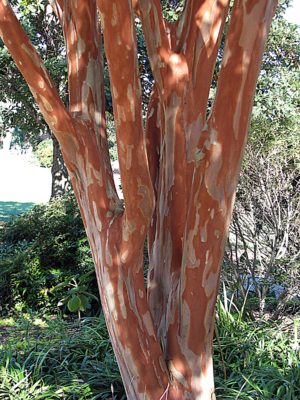PRETTY BARK AND TASTY NUTS
Bark Giveaway
Walking in the woods or an arboretum this time of year is a good time to play a game of tree identification. You say, “But trees are leafless!” No problem. Often, all you need is to look at the bark.
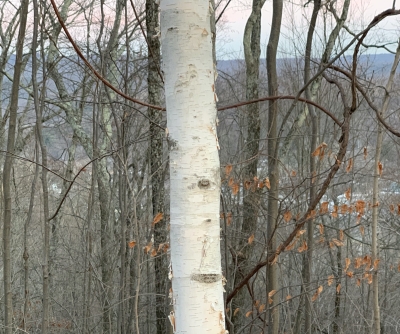
You might think a white-barked birch would be an easy identification. Not necessarily. A white-barked birch might be, instead, a European birch (Betula pendula). This one is distinguished from our native paper birch (B. papyrifera) by the dark, diamond shaped fissures on its bark. Or Himalayan birch (B. jacquemontii) or Asian white birch (B. platyphylla). Of course, these last three species aren’t likely to turn up in our woodlands.
I’m often snagged by cherry birch (B. lenta), whose bark isn’t white at all, but whose young bark resembles young cherry bark, then morphs with age into longitudinally elongated plates. The giveaway for cherry birch comes with breaking a small twig and smelling wintergreen.
Trees like red oak (Acer rubrum), sugar maple (A. saccharum), hop hornbeam (Ostrya virginiana), and ash (Fraxinus spp.) are easy to identify once you know their bark.
I can immediately identify hackberry (Celtis occidentalis) because its bark is one of my favorites, pure gray and punctuated by corky ridges.
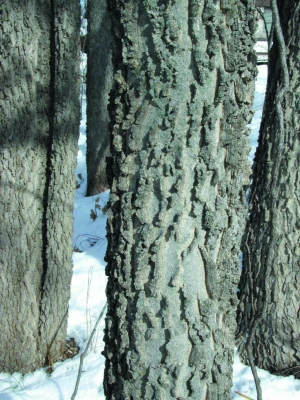
On a clear, wintry day when the sun hangs low in the sky, the shadows create a pattern that recalls those crisp, achromatic photographs of lunar landscapes.
Another of my favorites is American hornbeam (Carpinus caroliniana), whose bark looks like striated muscle. And juneberry (Amelanchier spp.), pale gray with charcoal gray striations. And paperbark maple (Acer griseum), with shiny, copper-red bark.
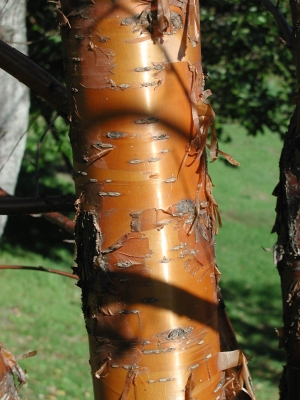
Paperbark maple bark
If tree bark offers no leads about a tree, a few dead leaves on the ground or clinging to stems can help out. Beech leaves make identification especially easy because beech is among the few trees that clings to almost all its dead leaves all winter. The lower leaves of some oaks also are reluctant to drop.
Bark, leaves, and aroma aren’t the only things that scream out a tree’s name. Everyone knows the distinctive weeping form and light-colored young bark of weeping willows. Less universally known is the very distinctive form of pin oaks (Quercus palustris): lower limbs sweep downward, mid-height limbs grow out horizontally, and upper limbs point skyward.
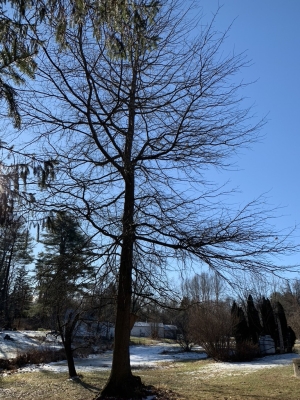
On most trees, stems are alternate, that is, they don’t grow directly opposite each other. So if a tree — one that grows wild in the northeast, at least — has opposite stems, I can limit the choices to just a few trees: dogwoods, maples, ashes, or catalpa.
This tree game is more than fun; it’s also useful for identifying firewood. A couple of years ago, I bought some firewood that was billed as swamp oak, which is sometimes a name for pin oak. The firewood’s bark had distinctive, long, flat-topped ridges, which a friend finally identified as belonging to American linden (basswood, Tilia americana). It’s not very good for firewood.
(For a lot more about identifying trees by their bark, in the Northeast, at least, see the book Bark by Michael Wojtech.)
Chestnuts Roasting on an . . . Well, not Exactly
Moving indoors, to the fruits of my labor. Or, rather, the nuts of my labor.
A few years ago I came up with yet another way to roast chestnuts, one that makes the pellicle, that thin, brown skin clinging to the nutmeat, easy to remove. After giving each nut a slit perpendicular to its axis, I spread the nuts in a shallow layer in a covered pan set in a hot oven or on top of the wood stove for 45 minutes. During that time the nuts steam from their own moisture. Then off comes the lid for another 15 minutes of cooking to let the nuts roast and the shells and pellicles (the skin around each nut) turn crisp.
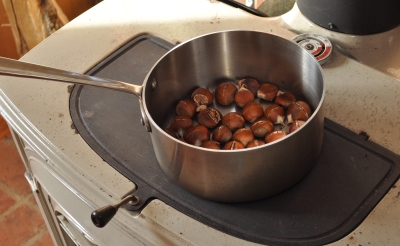
Massaging each nut without breaking up the nutmeat cracks the shell and the pellicle so that both come off easily — usually. The nuts have the mealy texture of a baked potato and a wonderfully sweet flavor.
Bark Futures
I’m planning to enjoy more fruits — or, rather, nuts — of my labor in years to come. Two Korean pine (Pinus koreansis) trees should eventually get me home-grown pine nuts. As should a lacebark pine (P. bungeana).
The lacebark pine, once it gets older, will also bring me attractive bark to admire as it naturally peels away in brown, rust, green, and cream-colored patches.
Other home-grown bark beauty here includes persimmon (Diospyros virginiana), whose bark is like alligator skin (but not scary), Japanese stewartia (Stewartia pseudocamellia)
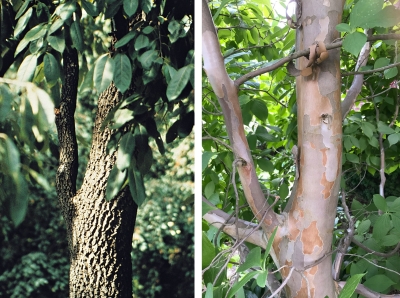
Persimmon (left) Stewartia (right)
and my previously mentioned favorite, hackberry, a fast growing tree now almost 15 feet tall that I started from seed I pulled off an old tree. The hackberry’s bark is just starting to develop those attractive, corky ridges.
